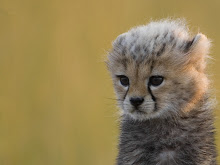This animal may have discovered the fountain of youth. It has astonishingly defeated death! The turritopsis nutricula is able to revert back into a polyp stage, or immature stage, after having reached sexual maturity. The jellyfish uses a process called transdifferentiation in which one type of cell is transformed into another type of cell. What they do is very similar to what salamanders do when regrowing limbs. The only difference is that this jellyfish has figured out a way to regrow it's entire body. By doing this, it can feasibly live forever. Of course, they don't all live forever because they have many other things to worry about, such as predation and disease. Most of these jellyfish are actually killed before they are even able to use their special abilities.
These beautiful creatures can be found in every ocean around the globe in temperate to tropical environments. The jellyfish you see above is a medusa, or mature jellyfish, and is only about 7mm long. You can tell that it is in it's mature stage because of its large number of tentacles. Very young turritopsis nutricula have only about 8 tentacles, but as they grow into adulthood they can have as many as 90 tentacles!
With the power of immortality, these tiny jellyfish may be rapidly growing in number. Scientists wonder if their population will soon become out of control.



